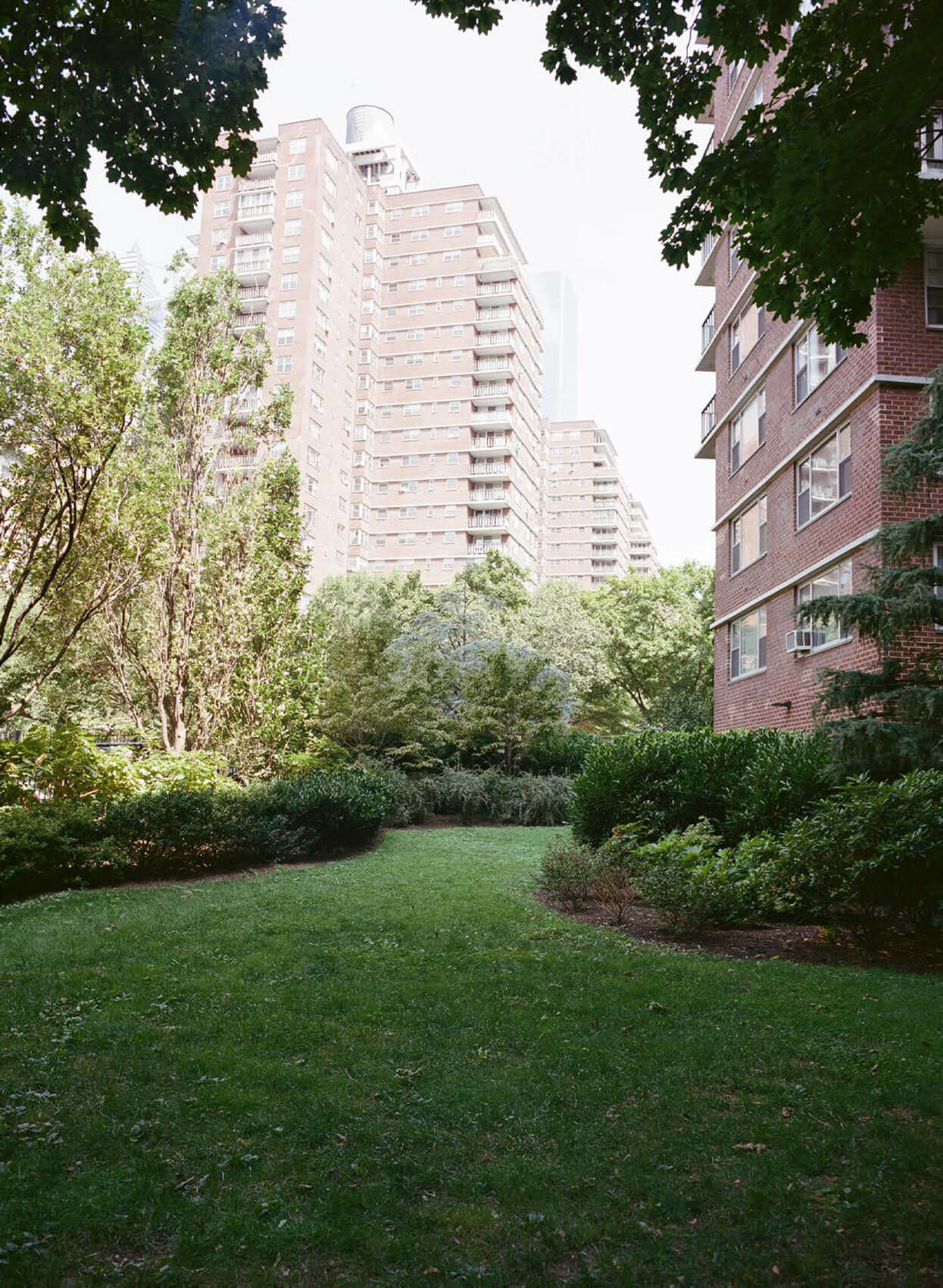Bernheimer Architecture (BA) is a recent recipient of New York State Energy Research and Development Authority (NYSERDA) grants for two separate commissions: River Commons, a new ground up residential building in the Bronx; and a renovation project at Penn South, an existing midcentury cooperative housing campus in Manhattan originally designed by Herman Jessor.
Together, River Commons and Penn South offer case studies in decarbonization, and high-performance building envelope experimentation, thanks to the Buildings of Excellence Program, which connects designers to grant funding for such endeavors. The latter is a collaboration with Erik Forman, AFL-CIO Housing Investment Trust’s director of housing policy, and Ambur Nicosia, Penn South board president.
For BA, NYSERDA grants are essential for meeting stringent energy benchmarks, and unionizing last year has since attracted new clients. “The State is having some difficulty with enforcing Local Law 97,” Andrew Bernheimer told AN. “A lot of that has to do with costs and feasibility. This has also meant increased carrying costs for tenants, and higher maintenance fees.”
At the AFL-CIO, “Eric knew that our workforce had unionized, and that we had voluntarily recognized the union,” added Brandon Pietras, BA’s decarbonization director.
“Eric introduced us to private developers interested in building performance, labor, and building a better architecture industry like Standish Lee at Fulcra,” Pietras said, “and also contacts at developments that originated as workforce and union-backed housing,” such as Penn South.
River Commons
The Bronx is famous for its towers. Look no further than River Park by Davis Brody Bond, or Jessor’s Co-op City. Marvel just completed a great one in Morris Heights, adding 175 supportive housing units at 1769 Jerome Avenue, perched above the 4 Train.
Another impressive supportive housing project is underway today by BA just off the Grand Concourse at 1225 Gerard Avenue, a few subway stops south of the new Marvel building. River Commons will comprise 365,000 square feet in a high-performance envelope.
River Commons will contain 326 units of affordable housing, 30 percent of which will support tenants transitioning out of homelessness, much like 1769 Jerome Avenue. It marks BA’s first project with NYSERDA, having earned the grant support very late in the design stage.
The passive house design has a high-performance thermal envelope, energy-efficient systems, and on-site renewable energy thanks to geothermal and photovoltaic systems.

NYSERDA’s partnership is enabling Bernheimer Architecture to research a wide array of decarbonization strategies. River Commons, for instance, is a case study for employing Packaged Terminal Heat Pump (PTHP) systems as an alternative to traditional Variable Refrigerant Flow (VRF) systems, among other things.
The key scope of the grant funding from NYSERDA includes the exploration of PH integration, including PTHP associated design; minimizing embodied and operational carbon impacts; and holistic embodied carbon analysis and International Living Future Institute’s (ILFI) Zero Carbon standard investigation.
“We’re creating a breakdown of all the building’s finish materials, showing where they come from, and how they’re sourced across the globe,” Pietras said. “This helps us identify risks in the supply chain, and can help reduce embodied carbon.”
Penn South Renovation
When it was built by the International Ladies Garment Workers Union, Penn South was hailed as exemplary—housing co-ops for working class people where landlord-owned buildings used to be. It has its own energy plant detached from the city grid, like Co-op City and other United Housing Foundation campuses, a cost-saving environmental asset.
The campus in Chelsea was the subject of a recent documentary by Penn South residents and director Ruth Sergel, The Cooperators. Today, BA and the AFL-CIO Housing Investment Trust are helping upgrade it, and combat increasing carrying costs for the people who live there.
“Penn South is a very unique campus, and its needs are different from most other campuses in New York City,” Bernheimer said. “NYSERDA is helping us inform design and construction moving forward, which will entail reskinning the buildings and making them more energy efficient.”

Will Sheridan, a principal at BA, relishes in Penn South’s history to better understand its modern needs. “[Herman Jessor] designed these buildings from the inside out,” he told AN. “His focus was on making the unit a wonderful interior environment, not so much the exterior. His original design ambitions were limited by cost, an issue we’re dealing with today.”
“This is a concrete structure with exposed slab edges, and double-wide brick walls that have no insulation. Some windows will need to be replaced, and we’ll need to improve air sealing. Roofs need improved insulation,” Sheridan continued.
“If these buildings can be re-skinned and made more efficient,” he said, “the building systems can be modified, and right sized, so energy consumption can be decreased, and maintenance costs can go down. NYSERDA helps us think about these things early in the design process, and think holistically at a scale across Penn South, which you otherwise wouldn’t have an opportunity to do.”
→ Continue reading at The Architect's Newspaper
